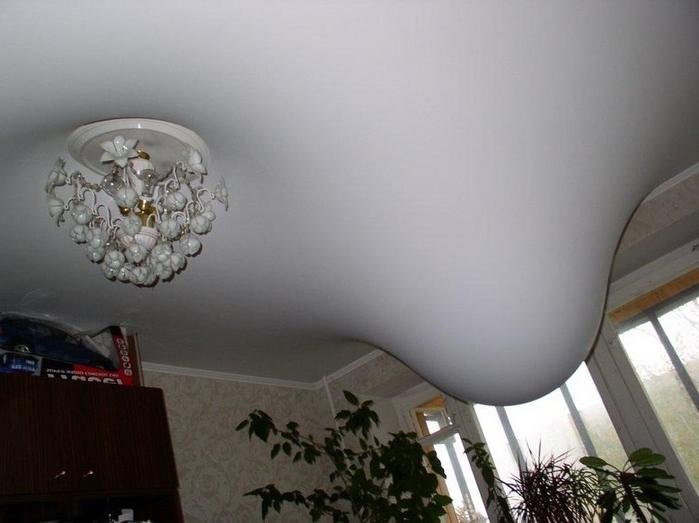If an accident occurs and the neighbors from above began to flood your apartment, then there is a risk that all property will be damaged. But in case you have suspended ceilings installed, such a tragedy can be avoided. All the liquid accumulates in the “bubble” and looks rather threatening, but in fact, the material from which such a ceiling is made is designed for such loads.
You can drain water from a stretch ceiling yourself, if you follow some useful tips.
Electricity
In case of flooding, it is urgent to disconnect all electrical appliances located directly on the ceiling. Despite the fact that the material is durable, it is better to play it safe in order to avoid the risk of short circuit or injury to people in the room. If you are afraid to drain water from the suspended ceiling yourself , you can contact the company that installed it to you or the repair organization. Specialists will quickly and accurately fix the problem. On the other hand, if you got up at night and found such a pretty picture in your apartment, there might not be time to wait for the masters. Therefore, you need to be prepared for the fact that you have to act independently.
How to drain water from a stretch ceiling yourself
The ceiling material, of course, is designed for the fact that sooner or later, neighbors from above can begin to flood you, but nevertheless it cannot withstand such a load for a long time. There is always a risk of leaks. Therefore, in addition to turning off electrical appliances, it is also better to remove all personal items from the room and hide the furniture.
After you have secured the room, prepare as many containers as possible, in which later you can drain water from the stretch ceiling.
Where to drain the water
When the “bubble” formed in the room, there are no problems with determining the place from where the water will merge. Usually this is a hole from the lamp located on the ceiling. But what to do if such a disaster happened in the bathroom or toilet, where lighting fixtures are usually mounted on the walls? In this case, select the angle closest to the “bubble” and drain water through it.
What mistakes are often made when draining water
Most often, landlords incorrectly calculate the amount of water that they receive "at the exit." Since the process of draining the liquid cannot be paused, quite often the residents still flood the room. Therefore, it is better to prepare as many empty containers as possible.
Also, some apartment owners decide to remove water from the suspended ceiling alone and realize too late that it is simply physically impossible to hold the “bubble” with your hands and change the basins. Therefore, be sure to ensure that there is someone close to home or neighbors who can serve empty buckets.
How to drain the water
In order to drain the water correctly, you must first estimate the approximate amount of fluid accumulated on the ceiling. Next, you need to find the optimal place on the "bubble" through which water will pour out. It is worth considering one important point. Even if you make a very small puncture, it will still grow rapidly under the weight of the liquid.

So, in order to drain the water from the stretch ceiling, you will need to stand on a stable stepladder (be prepared for the fact that you will have to stand for about 40 minutes). Next, you need to remove the lamp and through the resulting hole look inside and try to estimate the volume of water. In the event that there is too much fluid, it is worth using a hose, one end of which must be lowered into the drain tank, and the other inserted into the hole from the removed lighting device. When the bucket or basin is full, the hose must be pinched and the container changed. The procedure continues until there is no moisture left on the ceiling.
How to drain the bathroom
If there are no lights on the ceiling, then draining the water from the stretch ceiling can be done “over the edge”. Determine the closest angle to the bubble. Prepare a water tank. After that, gently pull the edge of the stretch ceiling so that it is flush with the bottom point of the “bubble”. It is not necessary to pull the material strongly, it is quite elastic, so it is better to do everything slowly and accurately. Then carefully drain the water into the prepared container.
Finally
Do not try to smooth out the “bubble” with your hands, this will lead to the fact that water spreads throughout the ceiling. Then it will not be possible to completely drain all the liquid and ultimately the residues will begin to bloom and smell unpleasant, which in the future will lead to the formation of mold, which is extremely difficult to remove.
If you drained the water yourself, then after that it’s better to call the craftsmen who will completely dry the ceiling with special heat guns, which will also return the surface to its original tension.
And yet, do not be alarmed by the “bubble” you see, because it is thanks to it that not only all your things will remain dry, but you will also avoid expensive apartment repairs.